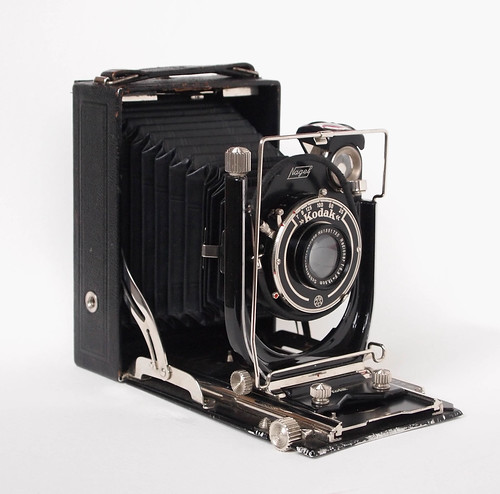 |
| Kodak Recomar 33 with Schneider-Kreuznach Radionar f6.3 135mm lens |
After writing about the
Ica Trona 210 last year as a "small large format camera", towards the end of summer this year, I took a
Kodak Recomar 33 on holiday. Most of the remarks about using the Ica Trona are equally applicable to the Recomar; with a small number of 9x12cm plateholders (oddly, the two Kodak-made holders I have don't fit the Recomar), and fewer film sheathes (just eight), a week away meant taking a dark bag to change the sheet film after exposure, and an empty box to store exposed film. I also took four plate holders without film sheathes, loaded with Ilford HP3 glass plates from the 1970s, which I wrote about last year in the post, '
Some large format glass plates'. I took a box of Fomapan 400 and some old Agfapan APX 100 with a develop before date of January 2004 (I didn't take my 9x12cm rollfilm back, and only shot sheet film while away). As the two different types of film had different notch codes, I used the same box to store them after exposure; I did also find a common development time with one particular dilution of Ilfotec LC29, meaning that I could develop both at the same time in the same tank, but could also distinguish which film was which if I wanted to use a different developer or dilution.
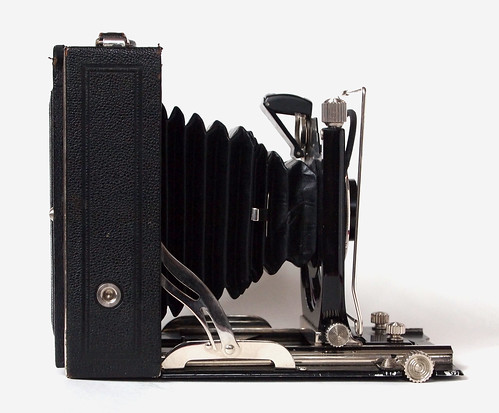 |
| Kodak Recomar 33 with Schneider-Kreuznach Radionar f6.3 135mm lens |
The Recomar camera was first produced by
Nagel around 1928, shortly before the company was bought out by Kodak in 1931; production by Kodak A.G. in Germany was continued until 1940. The Recomar camera was available in two plate sizes: as the
Recomar 33 in 9x12cm format and the
Recomar 18 as 6.5x9cm. My camera is the larger 9x12cm format, and came with a Schneider-Kreuznach f6.3 Radionar lens (datable to 1938), in the standard 135mm focal length for the format, with a
Gauthier Telma four-speed shutter (1/125th. 1/100th, 1/50th, 1/25th, as well as 'T' and 'B)'. The camera features all-metal construction, double extension bellows, wire frame sportsfinder, brilliant viewfinder with spirit level, ground-glass back, and both rise/fall and cross lens movements. It also came with a cloth covered cable release, possibly original. It's the most compact of my three 9x12cm folding cameras, just a few millimetres smaller than the Trona in its height and width at 15.8x10.8x5cm.
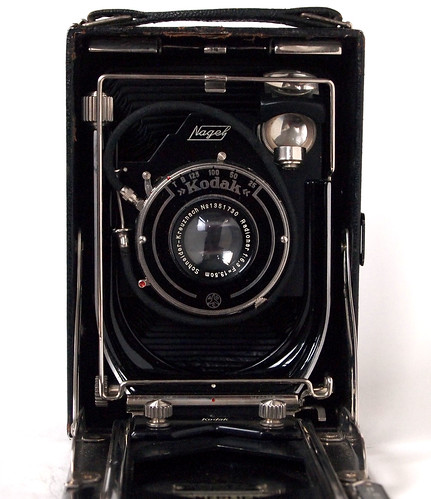 |
| Kodak Recomar 33 with Schneider-Kreuznach Radionar lens |
Looking at other images of Recomar cameras on Flickr, this has an unusual lens and shutter combination in the Radionar and Telma, and features
Nagel on the front standard where other Recomars have the name
Kodak. It does prominently state «Kodak» on the front plate of the shutter, and also on the bed alongside a
dealer's decal (J. L. Nerlien, Oslo). The serial number inside the body is 14914Z; whether this is early or late in the production run I don't know, but it is tempting to speculate that the front standard could be old Nagel stock left over from the time of Kodak's takeover, although the late date of the lens' serial number raises more questions than answers.
Kodak's manual lists the cameras having f4.5 Xenar lenses, in both the 18 and 33 sizes; the only example of a Recomar 33 with a slower f6.3 lens I've found online is a Nagel
one from 1929 (incidentally, the Nagel-branded front standard on my camera cannot fit a wider aperture lens as the shutter/lens flange is much smaller than that for a f4.5 lens). The camera cost just £16 on a well-known auction site, perhaps partly due to its slow(er) triplet lens; given the size of the 9x12cm negative, the quality of lens as compared to the usual Xenar Anastigmat (a Tessar-design) may not be quite so obvious, although when open wide, there does appear to be a falling off in definition towards the corners. The main drawback with the slower lens is a less-bright image when using the ground glass screen to focus, making this more difficult in low-light situations.
Although generally in very good condition for being over seventy years old, I did initially have a slight problem with the underside of the bellows being a little crushed and creased. This meant that this side of the bellows curved up and slightly inwards, and would cast a shadow just interfering with the projected image; this can be seen in the last photograph at the end of this post, shot on HP5 Plus: on the right hand side, the curving, slightly out of focus border is caused by this. I had this show in a number of the first shots taken with the Recomar, before realising that it could be easily rectified by gently pushing out the bellows from the inside, simply done at the point of changing the ground glass screen for a plateholder before making an exposure. As provided with double-extension, there's plenty of 'give' in the bellows, and after gentle encouragement, they tend to stay in position; like some other folding cameras I have, especially with double-extension bellows, when first opened, the mass of the bellows has a tendency to gather at the back of the camera.
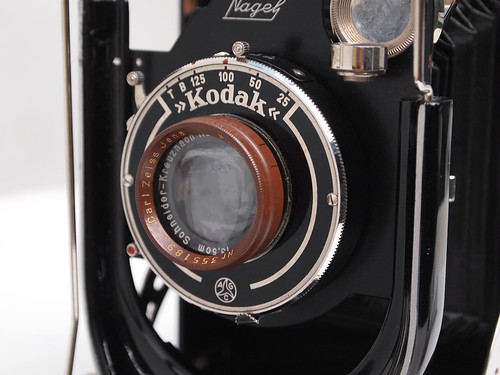 |
| Kodak Recomar 33 with Proxar III |
Following my experiences with the Ica Trona, I bought a 32mm
Proxar III supplementary lens to use with the Recomar. The 32mm outside dimensions of the f6.3 lens appears to be a common size: I have medium format cameras with f4.5 105mm lenses which can take a 32mm push-fit filter, as well as the
Kodak Retina with its f2 50mm lens
and the c.180mm f8
Rapid Rectilinear (it's useful to have this standardisation as I already have yellow filters and lens hoods in 32mm). I discovered only later that the coverage of the Radionar lens with the Proxar attached isn't sufficient for 9x12cm when focussed at infinity: using the Proxar, infinity is at 11cm. The two images below shot from the same position demonstrate this, first without and then with the Proxar fitted.
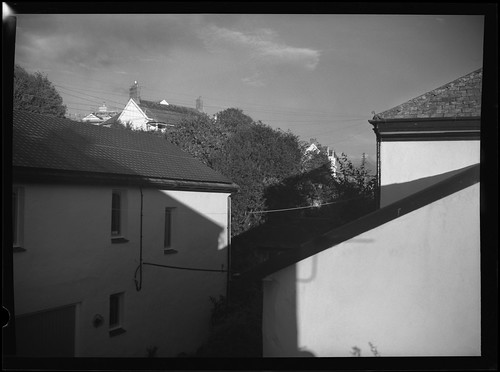 |
| Kodak Recomar 33 with Fomapan 400 |
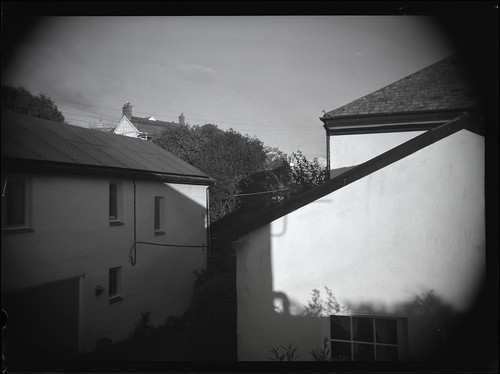 |
| Kodak Recomar 33 and Proxar III with Fomapan 400 |
Depending on the subject, this vignetting caused by the edges of the image circle isn't always a distracting problem, such as in the photograph below. The shots taken with the Proxar attachment appear to show that the image circle was not perfectly centred on the film, although I'm certain that the lens was centred
according to the white dots which match on the standard for returning the rise and cross movements: in both images here, the image circle appears shifted a small amount to the left, which would equate to a small amount of
rise when the camera is held in portrait orientation. Although pure speculation on my part, perhaps this rise is built-in to the camera design to automatically make a slight correction to the perspective of verticals.
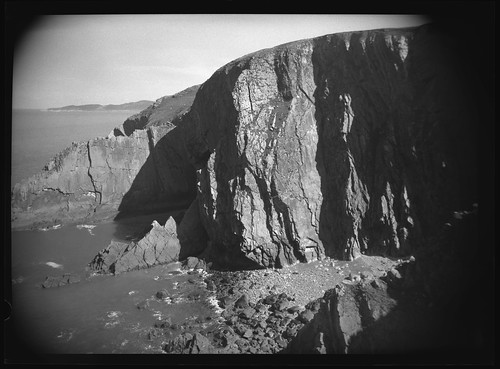 |
| Kodak Recomar 33 and Proxar III with Fomapan 400 |
The other function of the Proxar supplementary lens, that of a close-up filter or adaptor, does not suffer from vignetting by the simple fact that the further away from the film plane that the lens is extended, the greater the size of the projected image circle. Although shot on a forty-year old glass plate, with the usual signs of the losses in quality of an old emulsion, the image below with the Proxar used for its close focus qualities shows no vignetting in the corners.
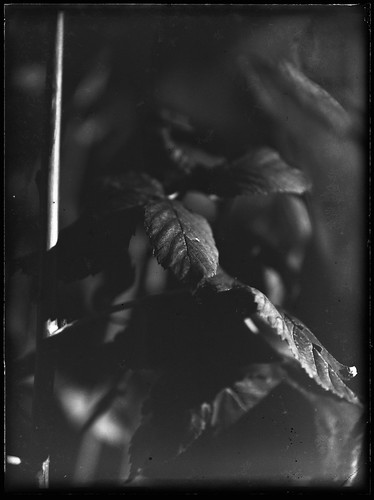 |
| Kodak Recomar 33 and Proxar III with HP3 glass plate |
One of the main reasons for wanting to use the Proxar attachment was when using the rollfilm back on a 9x12cm camera, the 6x9 frame size becomes near a normal angle of view, reducing the crop factor, as seen in the two photographs below: the second shot, although slightly turned, can be compared to
this image on 9x12cm film from more or less the same position (the top image is shot with a yellow filter; the image below uses the Proxar on its own as I was wary of stacking the filters).
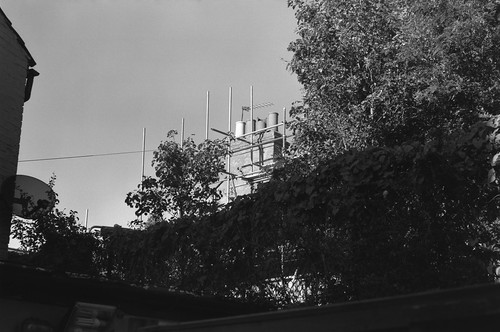 |
| Kodak Recomar 33 with HP5 Plus in rollfilm back |
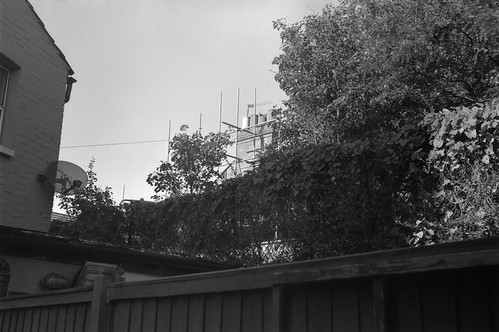 |
| Kodak Recomar 33 and Proxar III with HP5 Plus in rollfilm back |
The image below also shot with the rollfilm back demonstrates the Proxar as used for close-up purposes. For the benefit of composing on the ground glass screen, especially for shots like this with a tripod, I found it useful to draw the outlines of the 6x9cm aperture from the rollfilm back with a sharp pencil directly onto the ground glass. (Apart from the two close-up shots in this post which used a tripod, all the other photographs were shot hand-held).
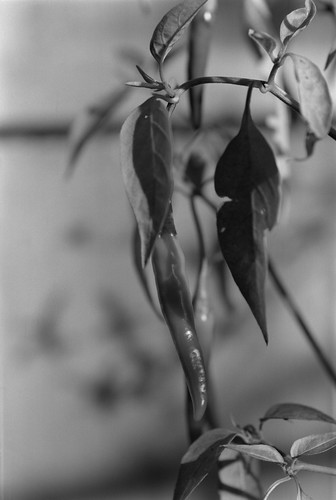 |
| Kodak Recomar 33 and Proxar III with HP5 in rollfilm back |
The Recomar 33 is the most robustly made of my 9x12cm cameras: the lens standard is reassuringly rigid once pulled out of the camera body, the rack and pinion focus is tight enough to remain in place even without locking the focus, and the general condition of the camera, despite the bellows, which are quite light-tight, suggests that it hasn't been that well used during its life. The leather on the side of the camera which has the folding sight of the wireframe finder is rather faded, indicative that it may have sat on a shelf, side-on to the light for many years. Ideally, I would perhaps choose a Recomar with a faster lens and a better shutter with a greater range of speeds, but as a 'small large format camera', the recent results demonstrate just how well it has performed for this purpose.
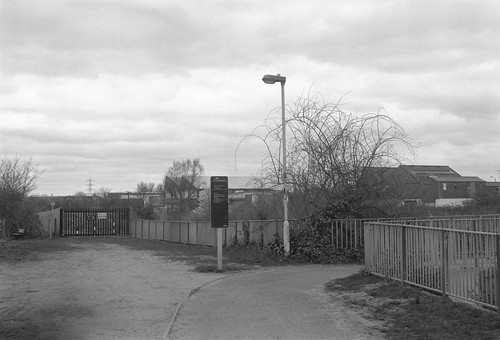 |
| Kodak Recomar 33 with Fomapan 400 in rollfilm back |
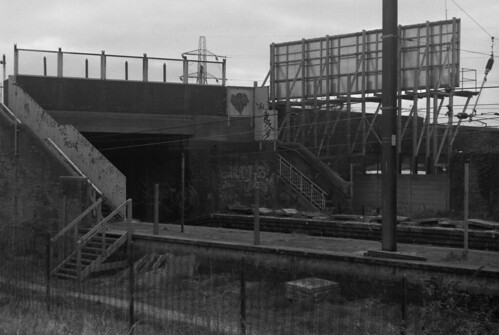 |
| Kodak Recomar 33 with Rollei RPX 400 in rollfilm back |
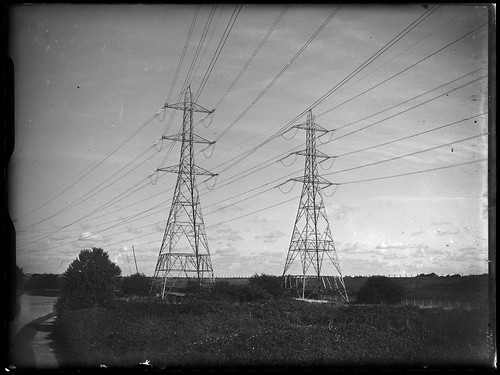 |
| Kodak Recomar 33 with Ilford HP3 glass plate |
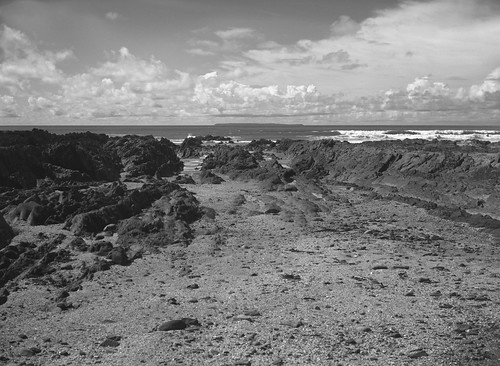 |
| Kodak Recomar 33 with Agfapan APX 100 |
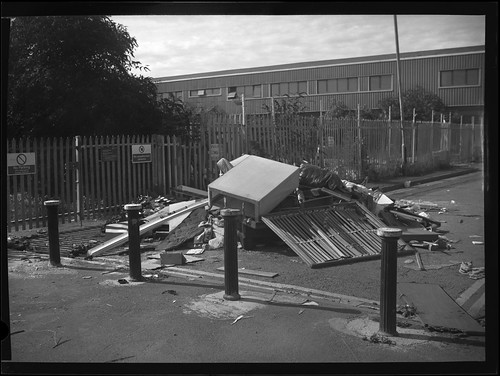 |
| Kodak Recomar 33 with Fomapan 100 |
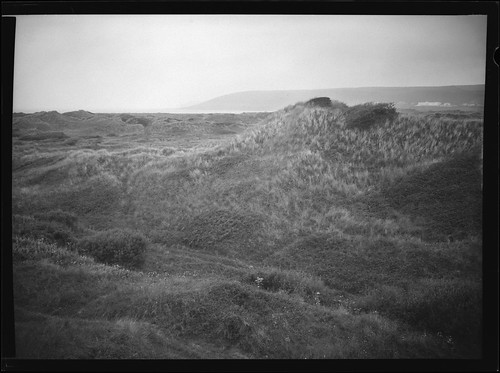 |
| Kodak Recomar 33 with Fomapan 400 |
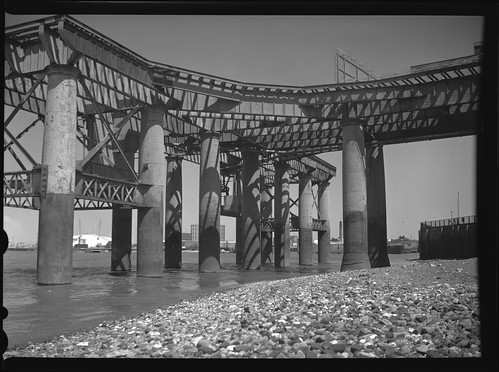 |
| Kodak Recomar 33 with HP5 Plus |
Sources/further reading:
Kodak Recomar 33 on Camera-Wiki
Manual for the Recomar 18 and 33
Kodak's listings of historic cameras


















What a beautiful camera. I'm charmed by the glass plate exposures.
ReplyDeleteThanks- the design and construction from Kodak AG was of a very high standard and their cameras have lasted well and are still very usable.
DeleteWhere did you find a roll film back for the 33? It's 120 film?
ReplyDeleteNot much contrast in the images. Mine is a Kodak 135mm 4.5 anastigmat with Compur shutter. I have used it with Efke 100 9x12 which is pretty special.
Thanks Mike
The roll film back is for 120 film; I found it on a well-known auction site; I think I would have liked a faster lens with my camera though.
Delete